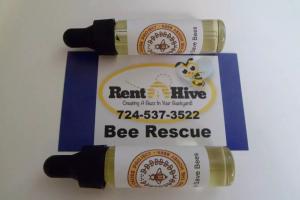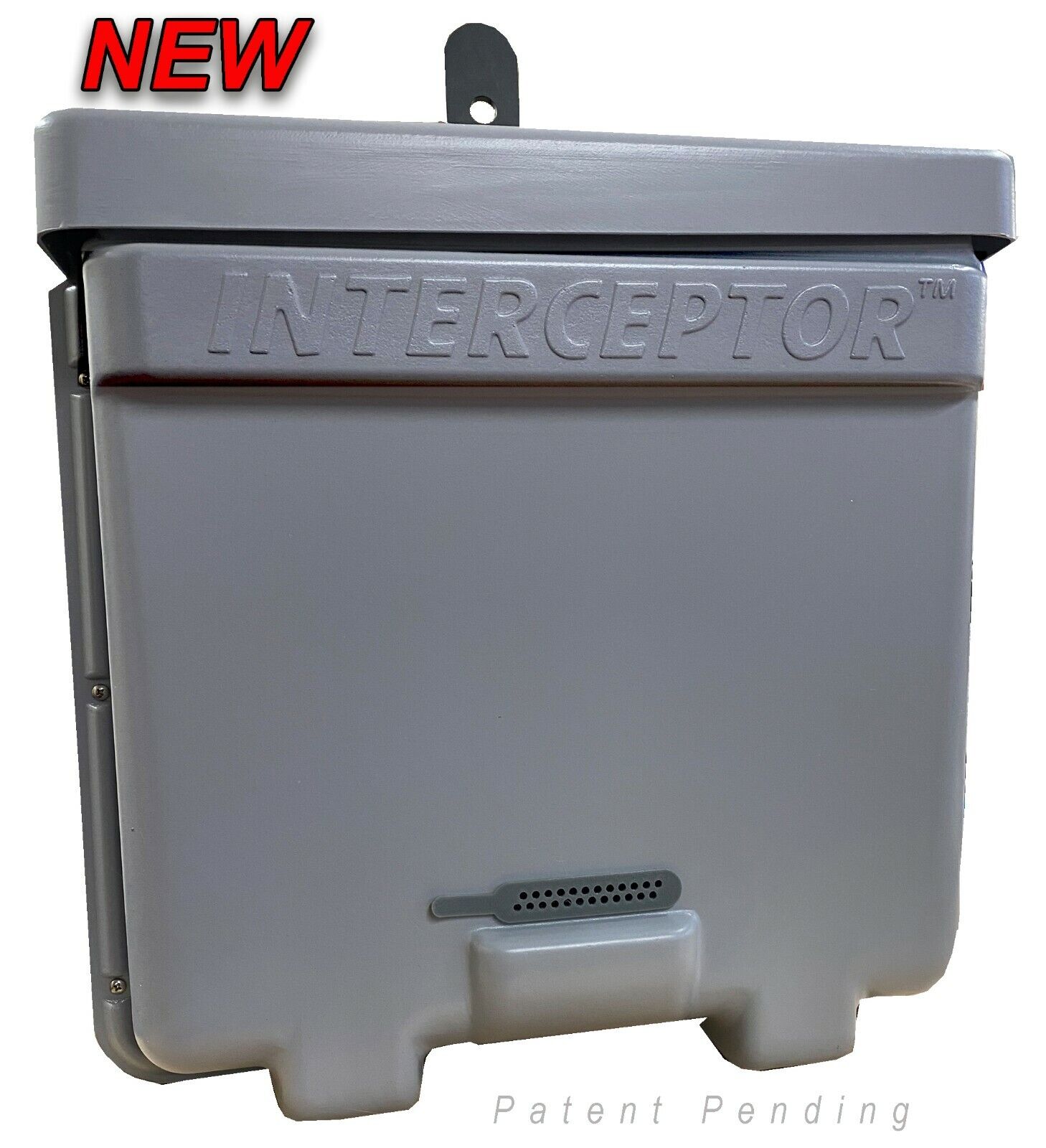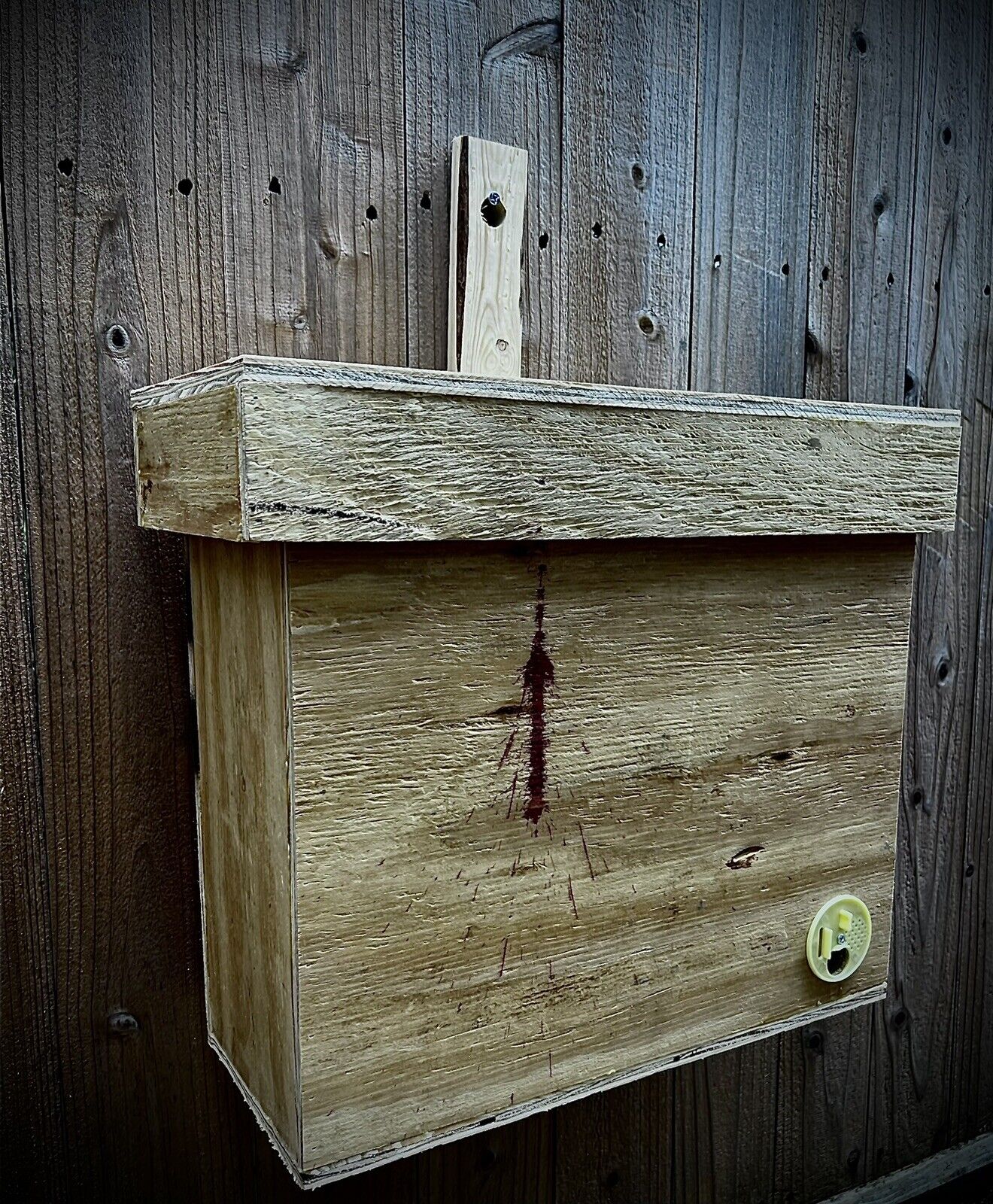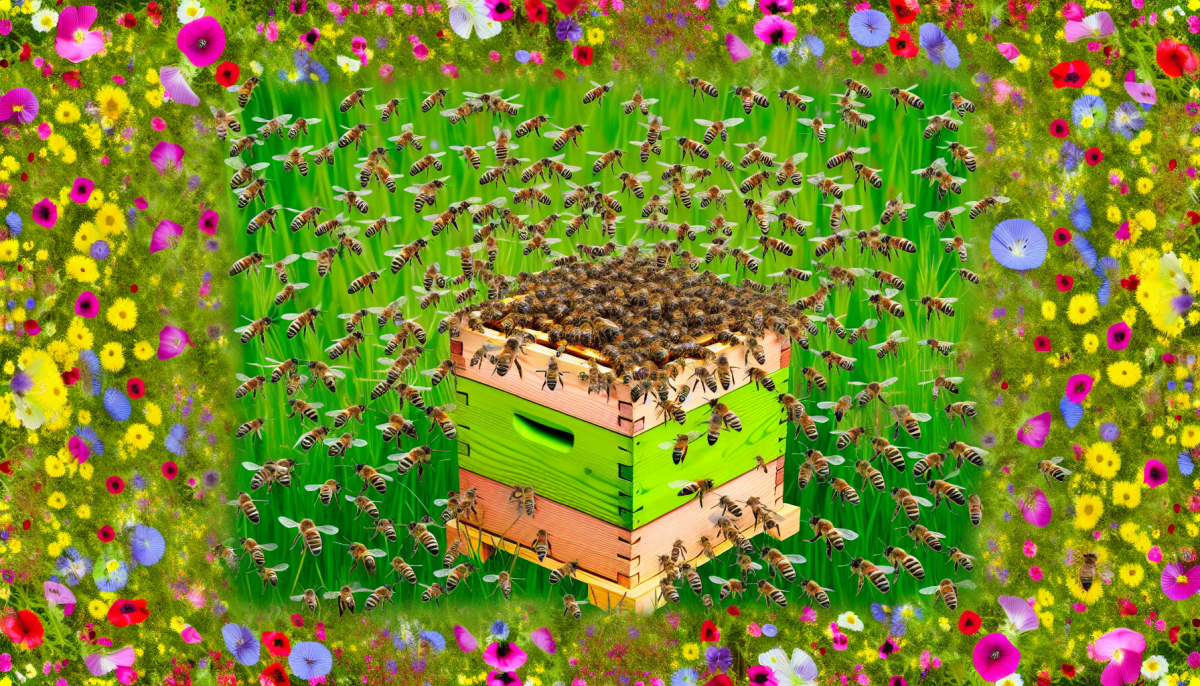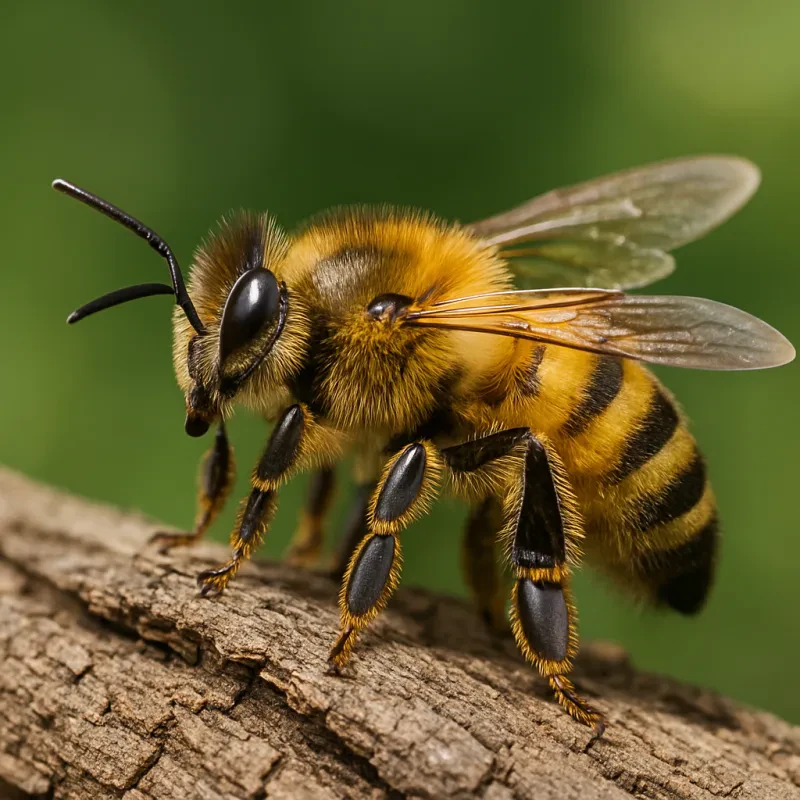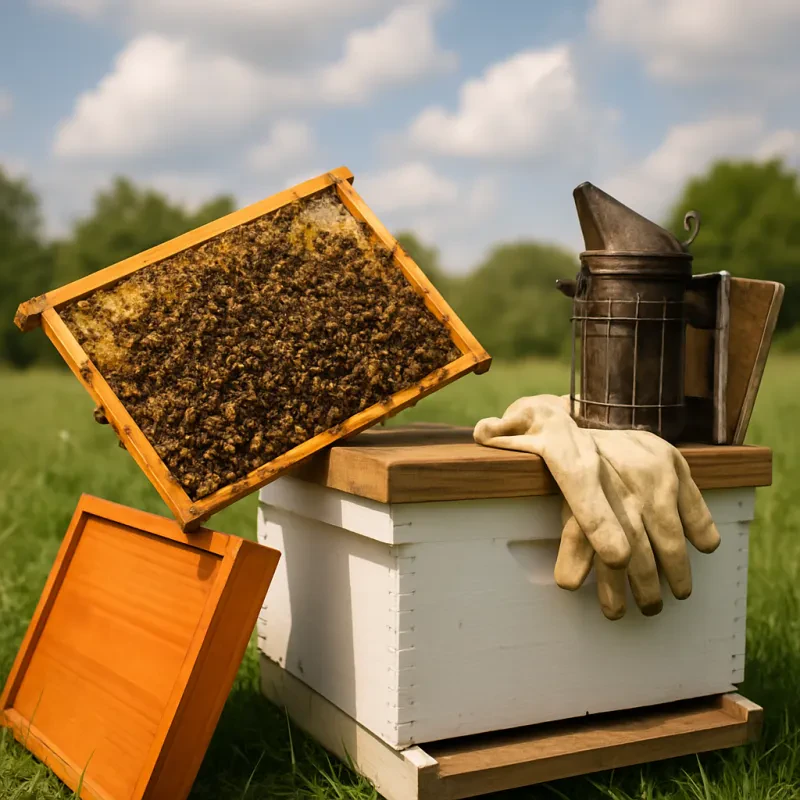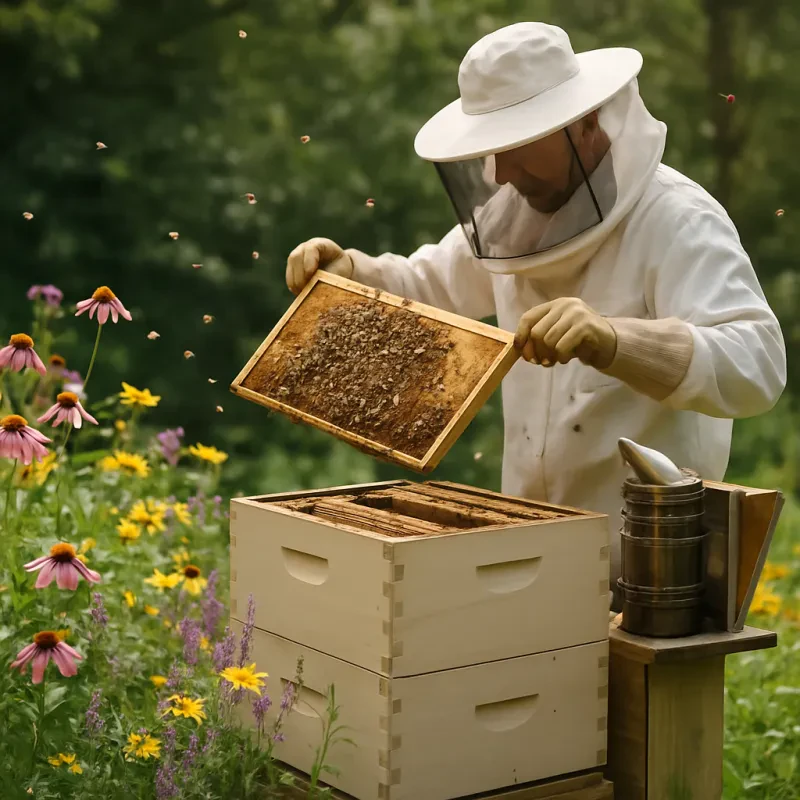How to Build a Honeybee Swarm Trap: A Step-by-Step DIY Guide
Introduction:
Capture wandering honeybee swarms and give them a new home with this simple, eco-friendly DIY swarm trap. Perfect for beekeepers and nature lovers, this guide will walk you through creating an effective and reusable trap using basic materials.
Materials Needed:
- 1 Plywood sheet (15mm thickness, size as per the box dimensions recommended below)
- Wood screws (1 ½ inches)
- Outdoor-grade wood glue
- Bait (Lemongrass oil or proprietary bee attractant)
- 1 Small piece of old comb (optional)
- Drill with bits
- Saw (hand saw or power saw)
- Measuring tape
- Paintbrush and eco-friendly paint (optional)
Step 1: Planning Your Swarm Trap
Dimensions: Aim for a volume of 40 liters, which research suggests is ideal for attracting swarms. A simple box measuring roughly 15" x 15" x 10" will do.
Location: Choose a location before you start building. Swarm traps should be placed at least 6 feet off the ground and in a shaded area if possible.
Step 2: Cutting the Wood
1. Measure and mark your plywood based on the dimensions above.
2. Cut the plywood into pieces: two 15" x 15" for the top and bottom, two 15" x 10" for the front and back, and two 14.5" x 10" for the sides (the width accounts for the thickness of the plywood).
Step 3: Assembling the Box
1. Apply wood glue to the edges of the bottom piece.
2. Screw the side pieces to the bottom piece.
3. Attach the front and back pieces in the same manner.
4. Attach the top last, ensuring there are hinges at one side for easy opening and a latch on the opposite side for security.
Step 4: Adding Entrance Holes
Drill a 1-inch diameter entrance hole on one of the front or side pieces, about 2 inches from the bottom. Optionally, you can create a small landing platform below the entrance.
Step 5: Baiting the Trap
Dab a few drops of lemongrass oil inside the trap or hang a small piece of old comb from the top. These scents mimic the pheromones of a queen bee, attracting swarms.
Step 6: Painting and Placement
Optionally, paint the trap with eco-friendly paint to weatherproof it and help it blend into its surroundings. Once dry, place the trap in your chosen location, securing it firmly.
By diligently following the steps outlined in this guide, you have not only learned how to construct an efficient honeybee swarm trap but also embarked on a crucial mission to support and protect our vital bee populations. But why is setting up a swarm trap so essential in our efforts to save the bees when they swarm?
Swarming is a natural process for honeybees, signifying a healthy, growing colony. However, in our increasingly urbanized world, suitable habitats for these swarms to establish new hives are becoming scarce. Without safe havens to call home, many of these swarms end up in locations not conducive to their survival or, worse, in areas where they are considered pests and subsequently exterminated.
By deploying a swarm trap, you offer these bees a ready-made home to settle into, circumventing the risks they face in the urban jungle. This action is a small but significant step towards preserving the bee population. Bees play a critical role in pollinating the plants that produce much of the food we consume. Their decline poses a direct threat to global food security and biodiversity.
Moreover, by capturing a swarm, you're directly contributing to the sustainability of beekeeping practices. Swarms captured can be relocated to farms and gardens, aiding in crop pollination and increasing local biodiversity. This not only helps in maintaining the ecological balance but also supports local food systems and communities.
In conclusion, building and deploying a honeybee swarm trap is more than just a DIY project; it's a call to action in the global effort to save our bees. These seemingly small contributions have a ripple effect, aiding in the preservation of our planet's biodiversity and ensuring the survival of one of our most important pollinators. Let's continue to work together, using our skills and resources, to create a world where bees can thrive and continue their essential work for generations to come.
